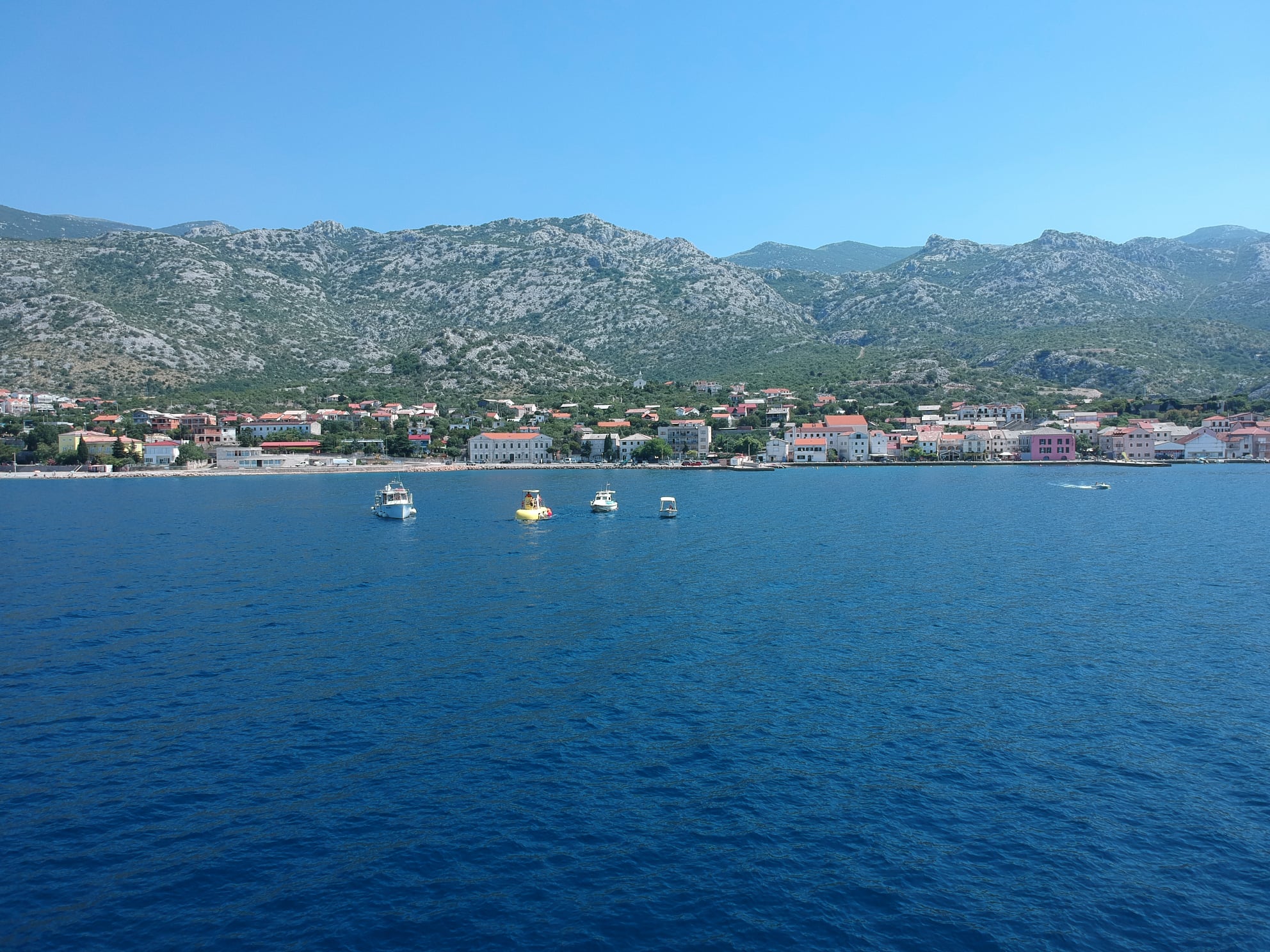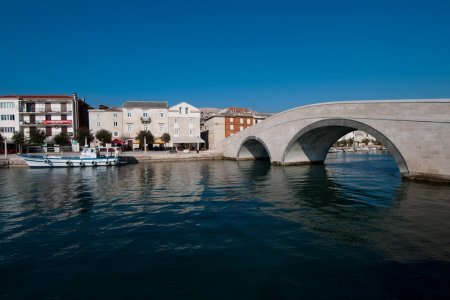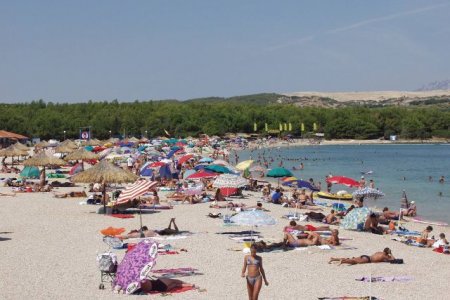Island (town) Pag
The island of Pag is the fifth area the largest island in the Adriatic Sea, but the long coastline of 302.47 km, most developed island in the Adriatic (indentation coefficient 4.5). Island is known for its poor coverage of vegetation, some of its parts, which are often compared to the lunar surface. Rocky landscape with only stalks of aromatic herbs that graze sheep creates a unique impression. Because the position of the island under the Velebit from which the year (especially in winter), a strong wind blowing, the island of Pag is almost all covered with salt from the Velebit channel..
Uniqueness and attractiveness of the island are numerous sources of drinking water, and numerous springs and the sea. The water generally comes to the island below the seabed with towering hillside. On the island there are three freshwater wetland lakes Big and Small Kolansko mud and dirt. Although the climate on the island include the Mediterranean, close to Velebit makes her so much influence on the vegetation of the island by the eastern part of the island due to strong winds and heavy salt completely naked. Pag Island as the largest kingdom of rocky ground on the Adriatic, where thin grass, low aromatic herb cover, sage and immortelle. These aromatic plants is essential in the diet of sheep on the island's rocky, and giving a special taste of the famous cheese. Also on the island to maintain the native bush and evergreen nature, oak, holm oak, Aleppo pine .... The land below the shallow [pag 02] bay of Pag hides yet another natural wealth, tested and proven medicinal mud.
Residents of the island engaged in viticulture, olive growing, fruit growing, fishery, animal husbandry and agriculture, which is significant in spite of the rocky surface of the island for centuries had a major impact on the lives of islanders and all thanks to the fertile land of sandy soil.



